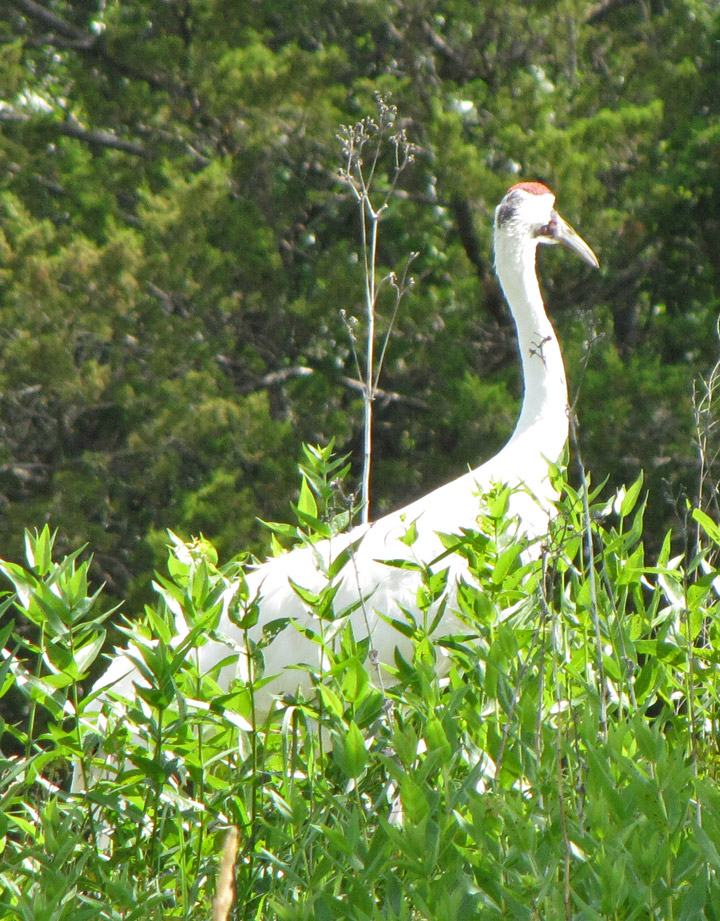

Whooping Crane
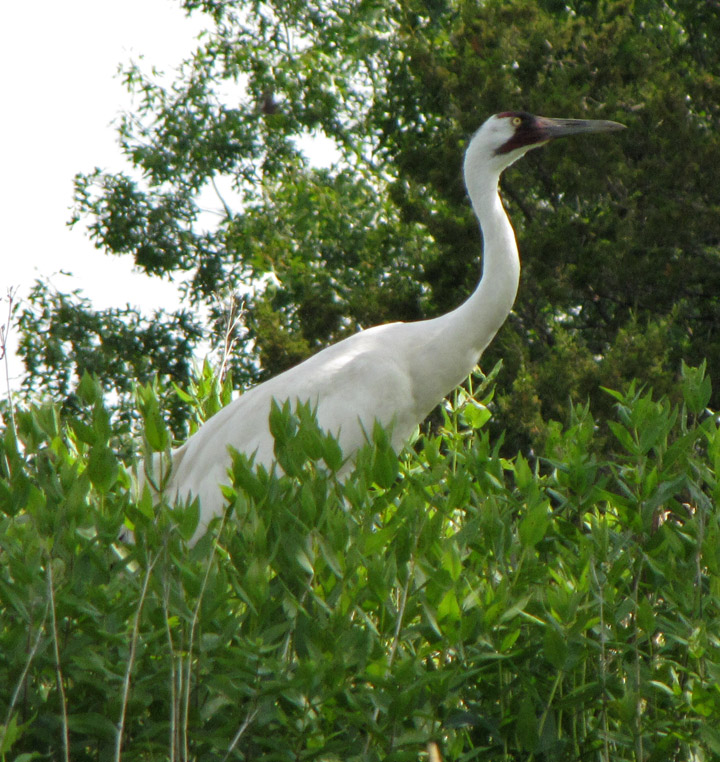
Whooping Cranes
The Whooping Crane (Grus americana), the tallest North American bird, is an endangered crane species named for its whooping sound and call. Along with the Sandhill Crane, it is one of only two crane species found in North America. The whooping crane's lifespan is estimated to be 22 to 24 years in the wild.
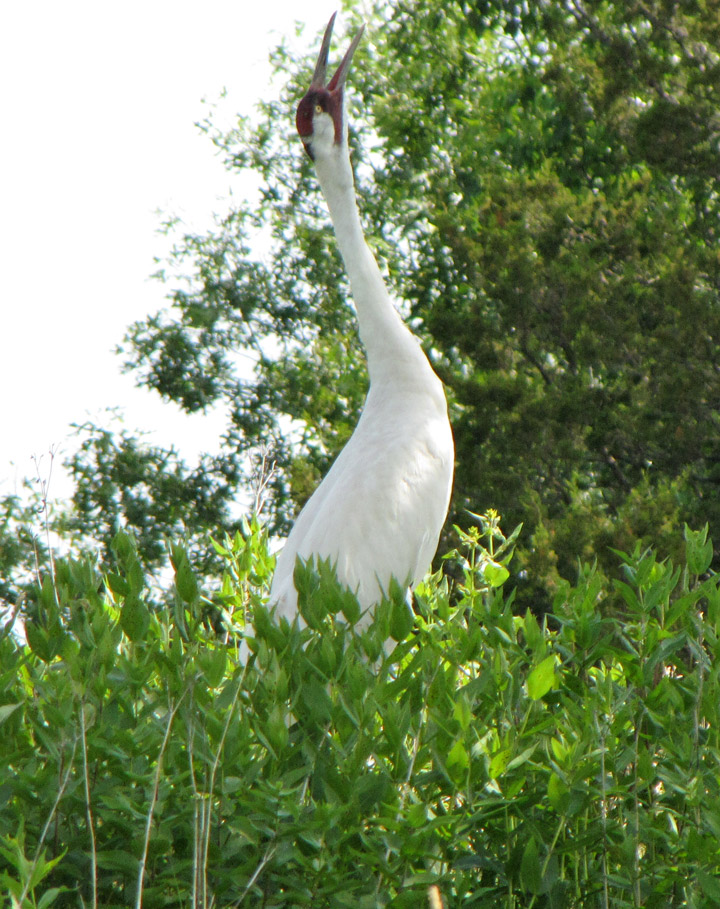
Adult whooping cranes are white with a red crown and a long, dark, pointed bill. Immature whooping cranes are pale brown. While in flight, their long necks are kept straight and their long dark legs trail behind. Adult whooping cranes' black wing tips are visible during flight.
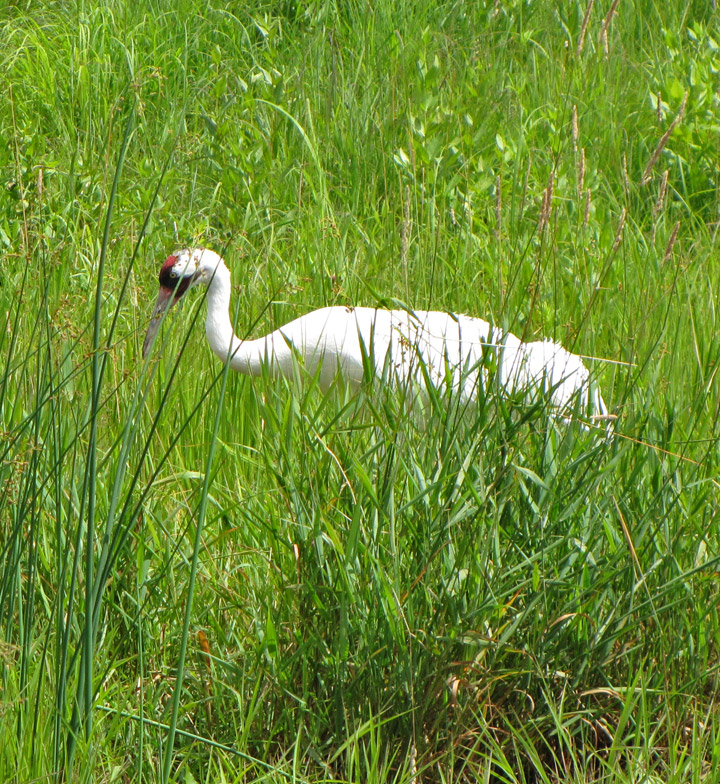
The species stands nearly 1.5 meters (5 feet) tall with a wingspan of 2.3 meters
(7.5 feet). Males weigh on average 7.0 kg (17 lb), while females weigh about 6.0
kg (14 lb). The only other very large, long-legged white birds in North America
are: the Great Egret, which is over a foot shorter and one-seventh the weight of
this crane; the Great White Heron, which is a morph of the Great Blue Heron in
Florida; and the Wood Stork. All three other birds are at least 30% smaller than
the whooping crane. Herons and storks are also quite different in structure from
the crane.
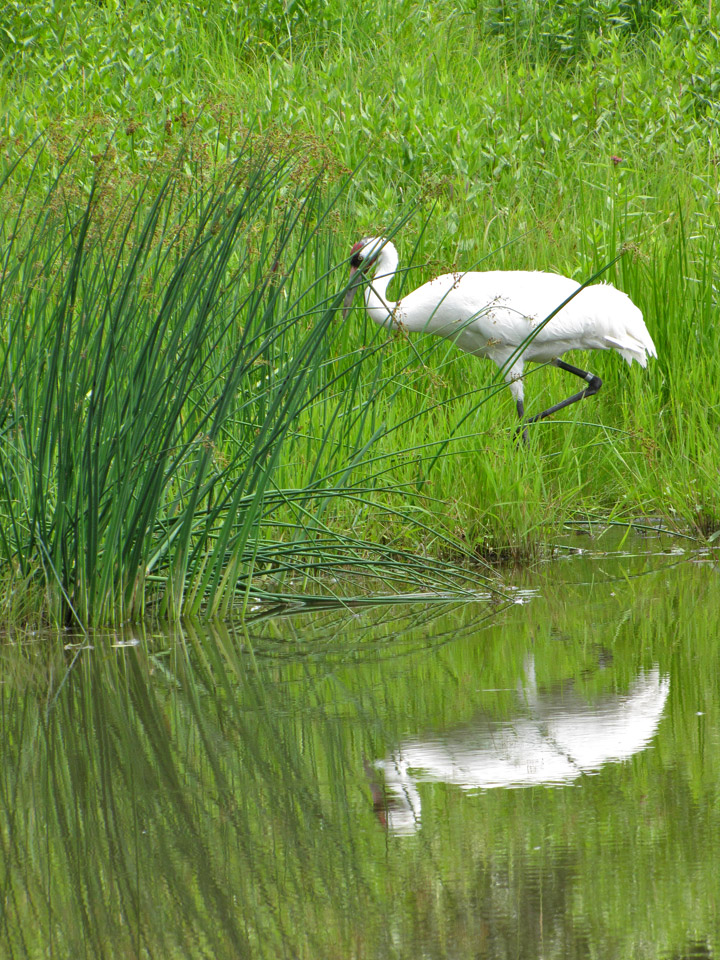
The whooping cranes' breeding habitat is the muskeg of the taiga; the only known
remaining nesting location is Whooping Crane Summer Range in Wood Buffalo
National Park in Alberta, Canada and the surrounding area. With the recent
Whooping Crane Eastern Partnership Reintroduction Project, whooping cranes
nested naturally for the first time in 100 years in the Necedah National
Wildlife Refuge in Central Wisconsin, USA. They nest on the ground, usually on a
raised area in a marsh. The female lays 1 or 2 eggs, usually in late-April to
mid-May. The blotchy, olive-colored eggs average 2½ inches in breadth and 4
inches in length (60 by 100 mm), and weigh about 6.7 oz (190 g). The incubation
period is 29–35 days. Both parents brood the young, although the female is more
likely to directly tend to the young. Usually no more than one young bird
survives in a season. The parents often feed the young for 6–8 months after
birth and the terminus of the offspring-parent relationship occurs after about 1
year.
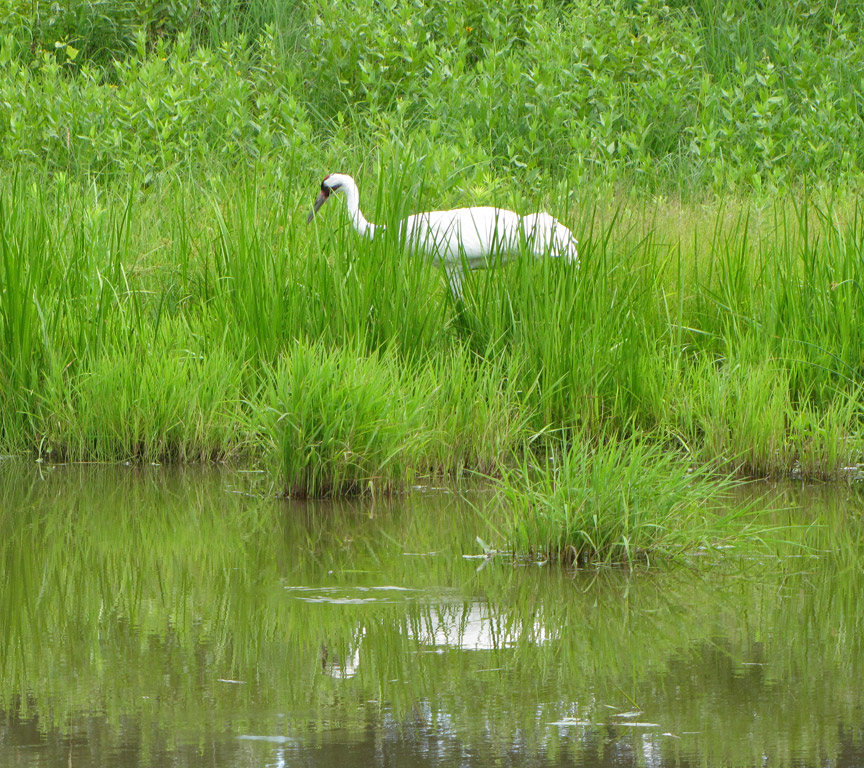
Breeding populations winter along the Gulf coast of Texas, USA near Corpus
Christi on the Aransas National Wildlife Refuge, Matagorda Island, Isla San
Jose, and portions of the Lamar Peninsula and Welder Point, which is on the east
side of San Antonio Bay.
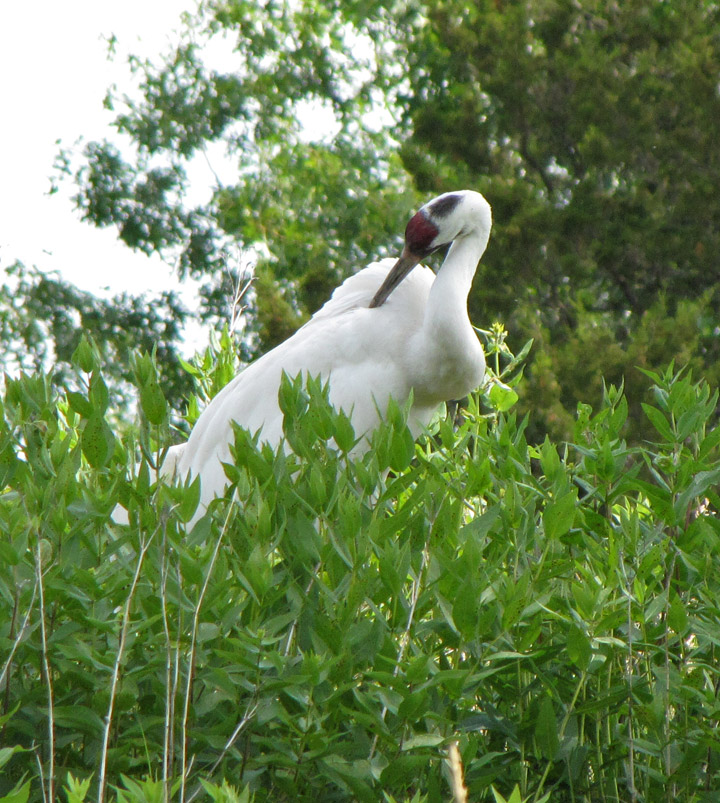
Up to 75% of the nations population pass through Salt Plains National Wildlife
Refuge in Oklahoma annually.
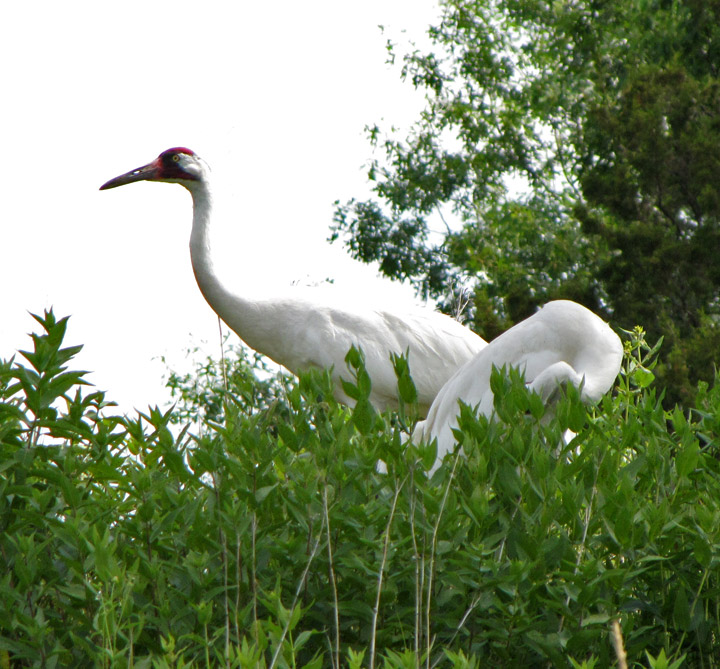
The whooping crane is endangered mainly as a result of habitat loss. At one
time, the range for these birds extended throughout midwestern North America. In
1941, the wild population consisted of 21 birds. Since then, the population has
increased somewhat, largely due to conservation efforts. As of April 2007 there
were about 340 whooping cranes living in the wild, and another 145 living in
captivity. The whooping crane is still one of the rarest birds in North America.
The United States Fish and Wildlife Service confirmed that 266 whooping cranes
made the migration to Aransas National Wildlife Refuge in 2007.
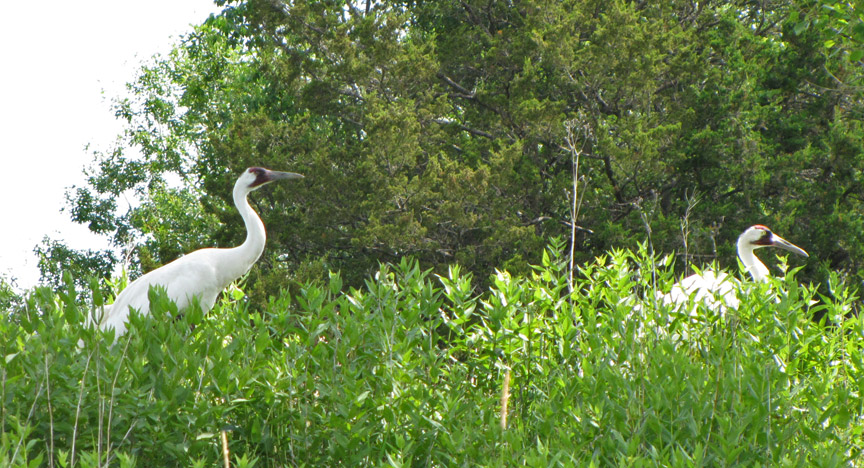
Among the many potential nest and brood predators include American Black Bear (Ursus
americanus), Wolverine (Gulo gulo luscus), Gray Wolf (Canis lupus), Red Fox (Vulpes
fulva), Lynx (Lynx canadensis), Bald Eagle (Haliaeetus leucocephalus), and
Common Raven (Corvus corax). Adults have very few predators, as even eagles are
unlikely to be able to take one down. The Bobcat is the only natural predator
known to be both powerful and stealthy enough to prey on adult whooping cranes
away from their nesting grounds.
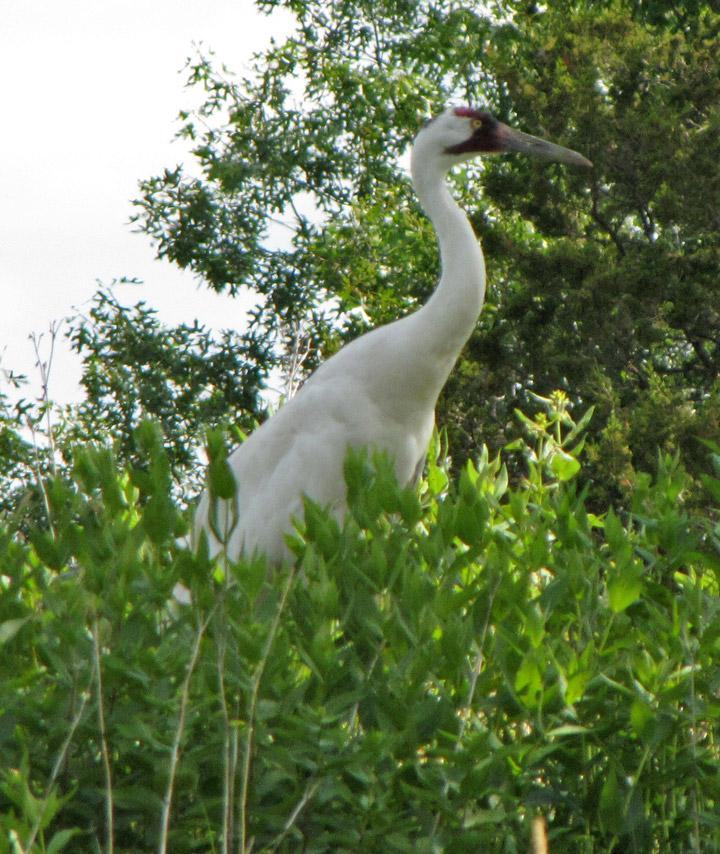
These birds forage while walking in shallow water or in fields, sometimes
probing with their bills. They are omnivorous and slightly more inclined to
animal material than most other cranes. In their Texas wintering grounds, this
species feeds on various crustaceans, mollusks, fish (such as eel), berries,
small reptiles and aquatic plants. Potential foods of breeding birds in summer
include frogs, small rodents, smaller birds, fish, aquatic insects, crayfish,
clams, snails, aquatic tubers and, berries. Waste grain, including wheat and
barley, is an important food for migratory birds such as the whooping crane.
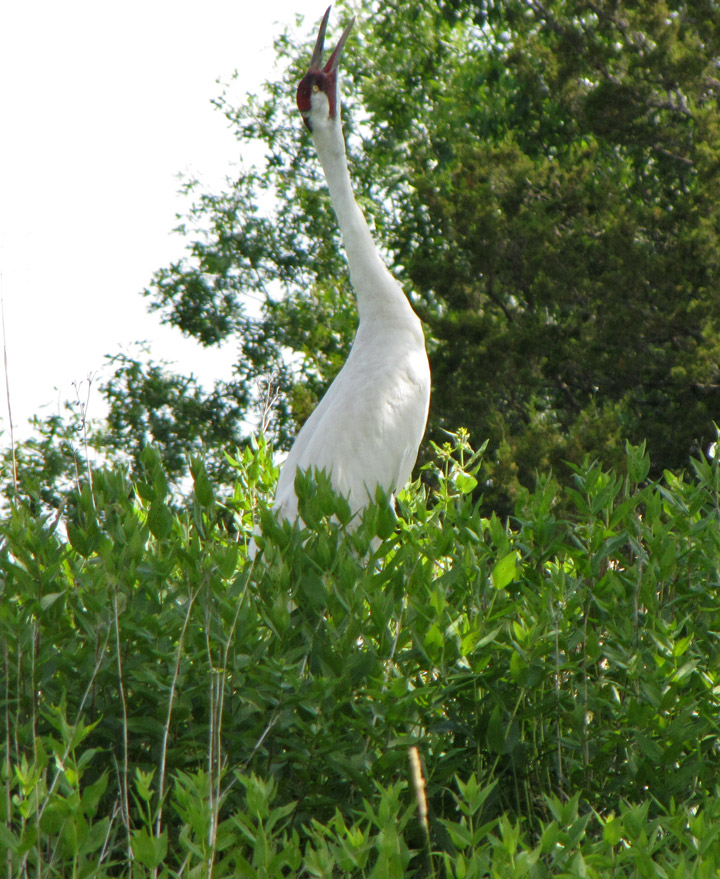
Young whooping cranes completing their first migration, from Wisconsin to Florida, in January 2009, following an ultralight aircraft. This procedure is carried out by Operation Migration.

The whooping crane was declared endangered in 1967. Attempts have been made to
establish other breeding populations in the wild.
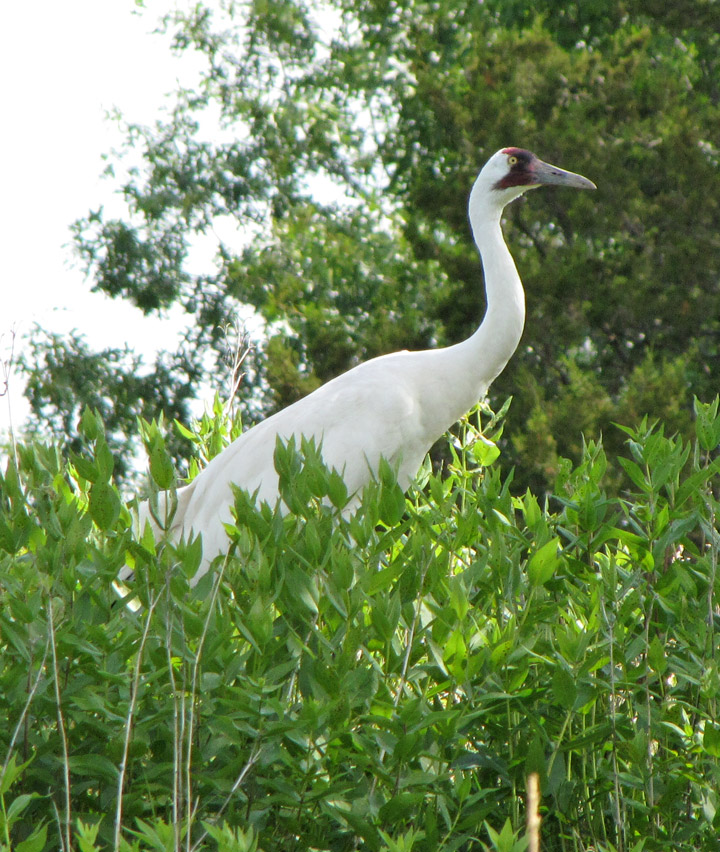
* One project by the United States Fish and Wildlife Service and the Canadian
Wildlife Service was initiated in 1975 involved cross-fostering with Sandhill
Cranes to establish a second self-sustaining flock. Although 85 chicks from the
289 whooping crane eggs transplanted into Sandhill Crane nests learned to
migrate, the whooping cranes failed to mate with other whooping cranes due to
imprinting on their Sandhill foster parents; the project was discontinued in
1989. This effort and the problem of imprinting is explored in the 1976
documentary A Great White Bird.
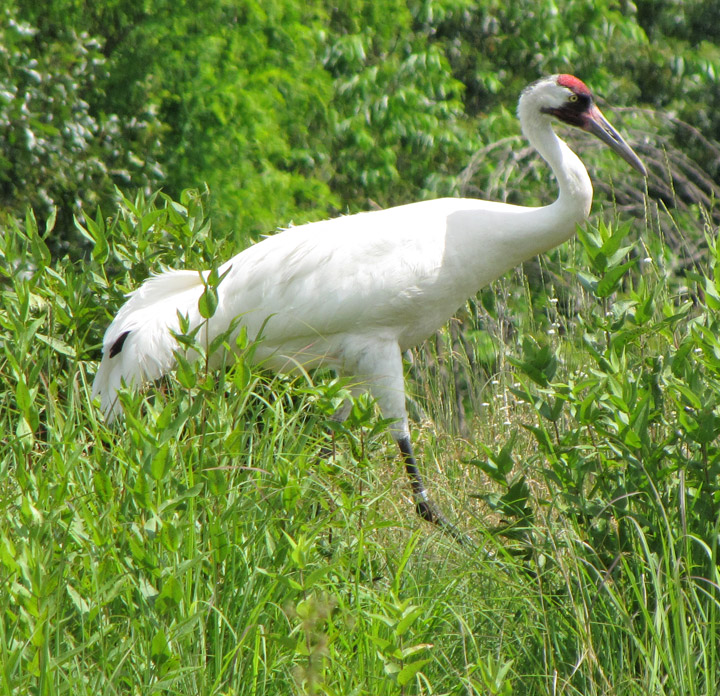
* A second involved the establishment of a non-migratory population near
Kissimmee, Florida by a cooperative effort led by the U.S. and Canadian Whooping
Crane Recovery Team in 1993. As of December 18, 2006, this population numbers
about 53 birds ; while problems with high mortality and lack of reproduction are
addressed no further birds will be added to the population.

* A third attempt has involved reintroducing the whooping crane to a new flyway established east of the Mississippi river. This project uses isolation rearing of young whooping cranes and trains them to follow ultralight aircraft, a method of re-establishing migration routes pioneered by Bill Lishman and Joe Duff when they led Canada Geese in migration from Ontario, Canada, to Virginia and South Carolina in 1993. The non-profit organization which is responsible for the ultralight migrations is Operation Migration, and the larger group, WCEP (the Whooping Crane Eastern Partnership), oversees all aspects of the Eastern Introduced Flock.

* One whooping crane from the Eastern Migratory Population (EMP) has been the
recipient of special attention from conservationists for several years. This
crane was given the name "Number 16-05" because he was the sixteenth whooping
crane to be tracked and tagged in 2005. That year, #16-05 collided with an
ultralight plane, and because of an injury resulting from this collision, he
missed the autumn portion of that year's northern migration. He also had
difficulty flying during his juvenile winter, however, he exhibited no flying
impairment during the spring migration.

The Operation Migration cranes are costume reared from hatching, taught to
follow their ultralight aircraft, fledged over their future breeding territory
in Wisconsin, and led by ultralight on their first migration from Wisconsin to
Florida; the birds learn the migratory route and then return, on their own, the
following spring. This reintroduction began in fall 2001 and has added birds to
the population in each subsequent year (Except that in early 2007, a disastrous
storm killed all of the 2006 yearlings after their arrival in Florida.).
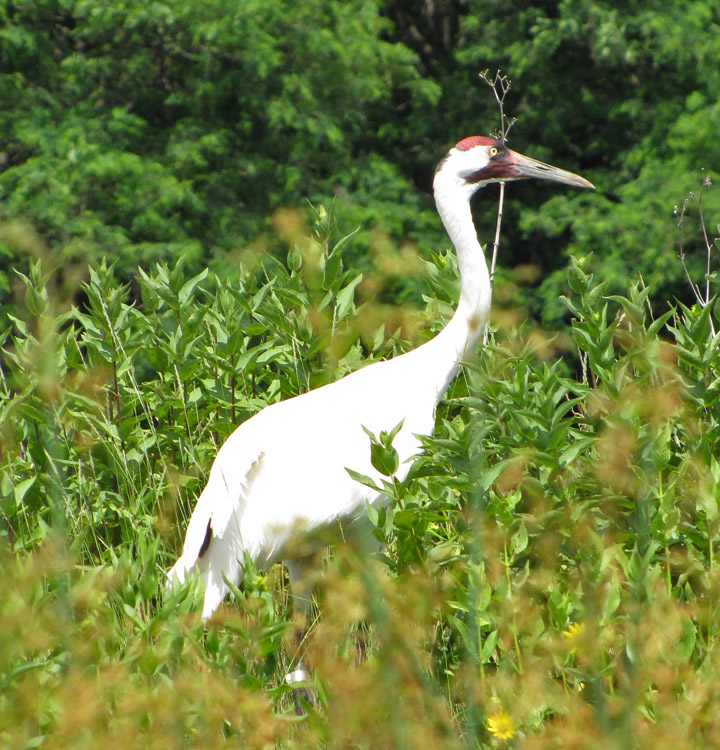
As of September, 2007, there were 52 surviving whooping cranes in the Eastern
Migratory Population (EMP), including 2 of the 4 yearlings released in Wisconsin
and allowed to migrate on their own (Direct Autumn Release (DAR)). Fourteen of
these birds had formed seven pairs; two of the pairs nested and produced eggs in
spring 2005. The eggs were lost due to parental inexperience. In spring 2006
some of the same pairs have again nested and are incubating eggs. Two whooping
crane chicks were hatched from one nest, on June 22, 2006. Their parents are
both birds that were hatched and led by ultralight on their first migration in
2002. At just 4 years old these are young parents. The chicks are the first
whooping cranes hatched in the wild, of migrating parents, east of the
Mississippi, in over 100 years. One of these young chicks was unfortunately
predated on the Necedah National Wildlife Refuge. The other young chick, a
female, has successfully migrated with her parents to Florida. As noted above,
in early February, 2007, 17 yearlings in a group of 18 were killed by the 2007
Central Florida tornadoes. All birds in that flock were believed to have died in
the storms, but then a signal from one of the transmitters, "Number 615",
indicated that it had survived. The bird was subsequently relocated in the
company of some Sandhill Cranes. It died in late April from an as yet unknown
cause, possibly related to the storm trauma. Two of the 4 DAR Whooper chicks
from 2006 were also lost due to predation.
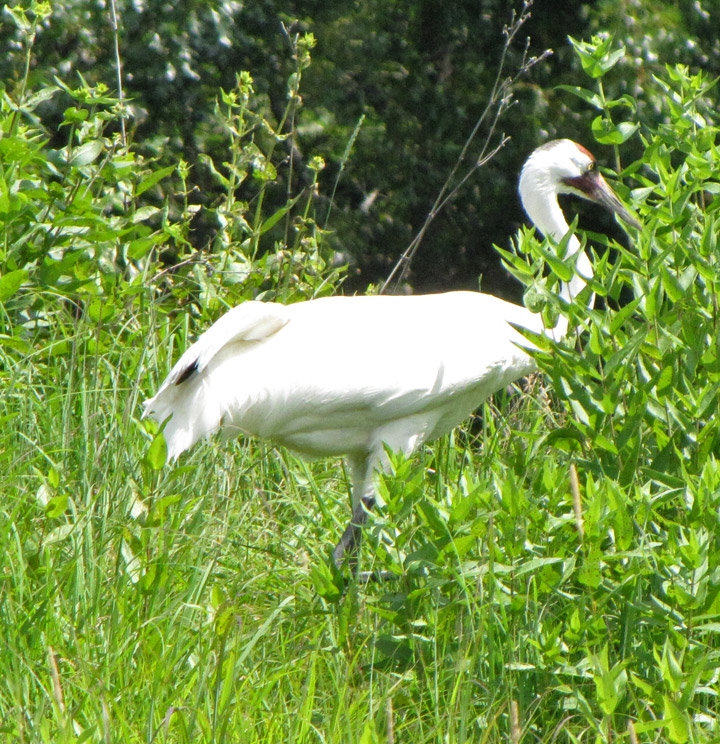
In Wood Buffalo National Park, the Canadian Wildlife Service counted 73 mating
pairs in 2007. They produced 80 chicks, of which 40 survived to the fall
migration, and 39 completed the migration to Aransas National Wildlife Refuge.
Text from Wikipedia


